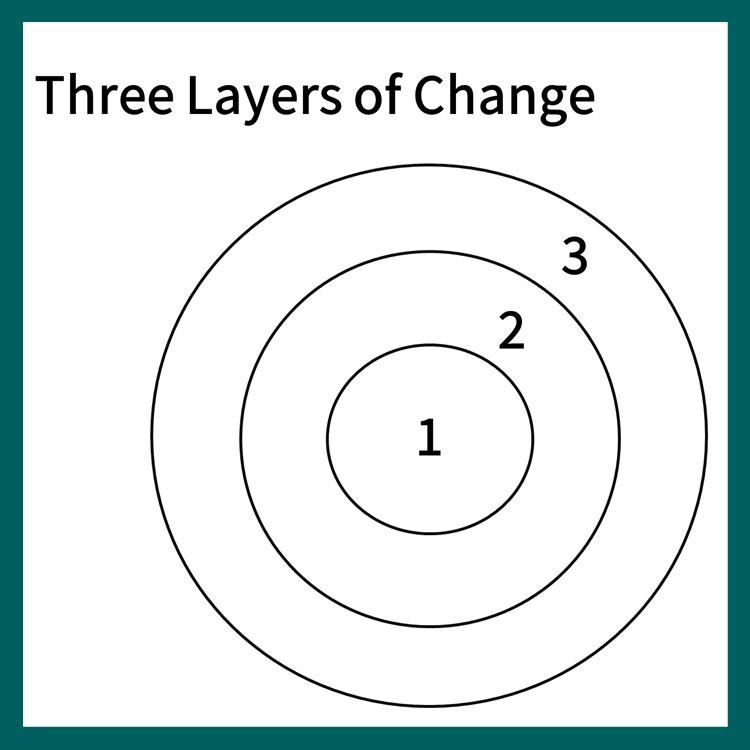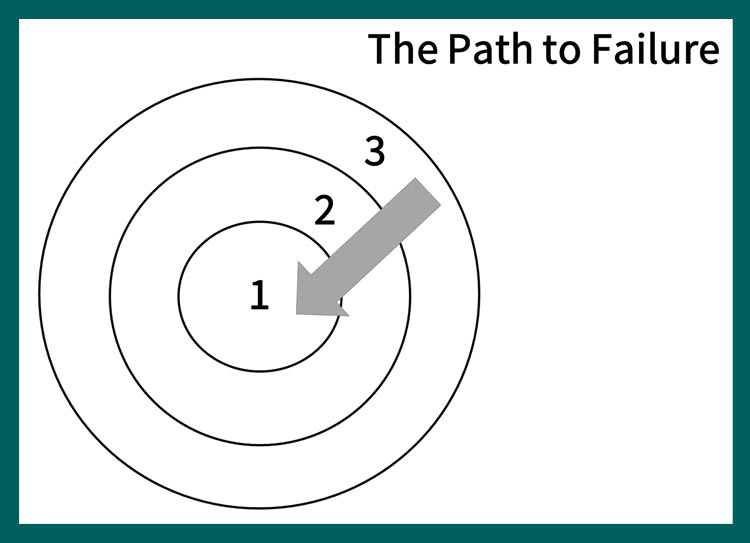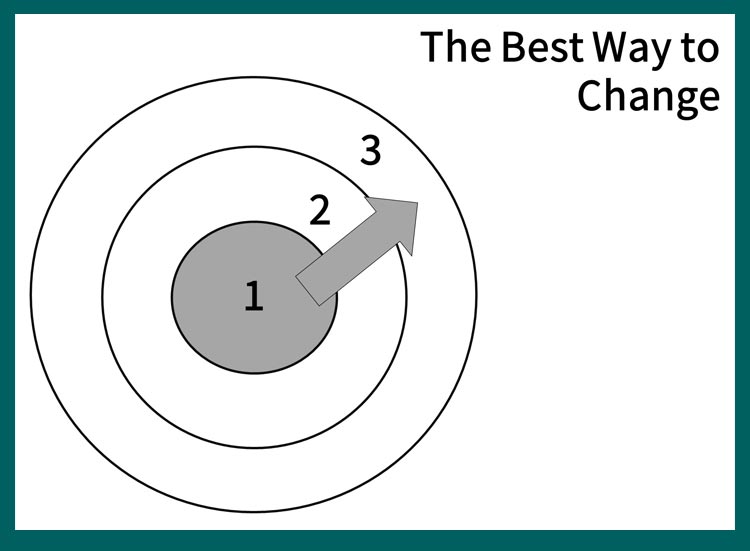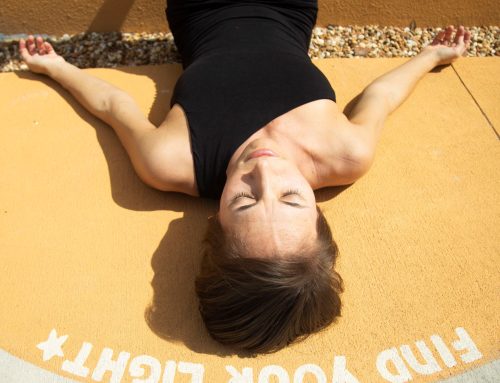 Last week we discussed how ongoing learning keeps you on the cutting edge as a yoga professional. Yet it’s really the good habits you embody on a daily basis that internalize your new knowledge. Those good habits form the foundation for mastery and they amplify your power to be a positive influence in your community.
Last week we discussed how ongoing learning keeps you on the cutting edge as a yoga professional. Yet it’s really the good habits you embody on a daily basis that internalize your new knowledge. Those good habits form the foundation for mastery and they amplify your power to be a positive influence in your community.
You might be thinking this is clearly common-sense information. You might realize that you’re too busy running around town—serving your private clients and teaching yoga classes—to establish new habits. Or, you might be uncertain about which habits to change or adopt first.
Maybe you’re frustrated that you still haven’t let go of some lingering bad habits—and you feel like they’re pulling you down.
While there are certain habits unique to us as individuals, there are good habits that collectively serve us well as yoga professionals. This article will shed light on which habits can give you the most energy for your action. And, it will also highlight a simple strategy you can use to embrace those good habits now (and get them to stick around long-term).
Photo Credit: Indigo Photography
THE IMPORTANCE OF GOOD HABITS
In order to learn and evolve as human beings, we go through the trial and error process. You try, fail, learn, and then try differently. You throw out what doesn’t work and keep what does.
From this basic standpoint, habits are just a series of automatic solutions that you have adopted in order to meet the challenges of your life. For example, if you encounter traffic on your way to teach a morning class, you might arrive late. This will cause you to set your alarm earlier so you can leave before the rush. Eventually, you get so accustomed to rising naturally at that earlier time that you do so without the need for an alarm. And, the end result of your new habit is that you arrive at the studio in a calm, centered space from which to teach.
When you put these good habits on repeat, a number of benefits result. You:
- Can take action without always thinking
- Solve problems with as little energy and effort as possible
- Free up mental space to focus on more important things in your life (And yoga business)
- Can pay attention to new details
- Are able to receive new and creative thoughts
- Create more freedom, and
- Unlock new levels of performance
Now, who doesn’t want all of that and more?!?
3 LAYERS OF BEHAVIOR CHANGE
Before we get into the good habits that will lead to the benefits listed above, you will need to understand the three levels at which change occurs. This info is outlined in more detail by James Clear, in his book Atomic Habits.
 The outer circle represents your desired outcomes. This is where you want to go in your future. This area represents the goals you have for your yoga business. An example of this might be to have 20 students regularly attending each of your classes or to have an online retail aspect of your website to generate more passive income.
The outer circle represents your desired outcomes. This is where you want to go in your future. This area represents the goals you have for your yoga business. An example of this might be to have 20 students regularly attending each of your classes or to have an online retail aspect of your website to generate more passive income.
The middle layer reflects the systems you have in place to reach your goals. It’s how you operate your business and the habits you take daily to stay on track. I use the profit first accounting system, for example, to ensure my business has positive cash flow each month. You might use MindBody to track your clients, or you have a cleaning team to ensure there is a seamless workflow at your studio. Perhaps you even re-design your teaching space to improve the sound quality for your students.
Finally, the inner layer is at the core of the circle. It’s your identity. This area encompasses your ideas and beliefs about yourself. It’s how you view the yoga industry and the world at large.
WHY GOOD HABITS DON’T STICK
Most people, including yogis, find it challenging to get good habits to stick in their regular routine. This is because they approach the process to change from the wrong direction. They fail because they try to adopt habits directly related to their goals first.

Let me paint a familiar picture for you. You’ve just completed your yoga teacher training and you’re so excited to teach, that you accept every position offered to you. At the same time, you listen to business podcasts and you jump into yoga-related Facebook groups to see what’s going on in the industry. You also try out classes at other studios in your area to meet new people and scope out additional teaching facilities.
Oh yeah, and you’re doing that while still holding down a regular 9-5!
You hope that maxing out your time and energy with these actions will lead you to your ultimate goal of quitting your corporate job and teaching yoga full-time.
While each of those habits in-and-of-themselves could be a piece to your success, you were focused solely on the end result—changing careers. You let your focus on the outcome determine your actions. And unfortunately, you’re far more likely to burn out before you see the revenue needed to support your family.
HOW TO INTERNALIZE GOOD HABITS
To prevent burnout and lack of confidence as you take action, start at the inside of the circle. Decide who you want to BE. Instead of wanting some-thing, get clear on being some-one. Shift the way you look at yourself and then start making decisions based on that future you.

Instead of focusing on “teaching full time,” consider yourself an incredible yoga teacher. Rather than having the goal to learn more anatomy, become a body specialist. The goal is not to have more clients, but to be a magnet for those seeking private yoga lessons.
This is an important point because your behaviors are a reflection of your identity. When you’re proud of who you are, you are inspired to take positive actions. This leads to good habits becoming a natural part of your daily life—not a struggle to change for the better.
HOW TO CREATE A NEW STORYLINE
Old storylines about your identity can prevent you from adopting good habits that will ultimately help you reach your goals. That’s why real, lasting change comes with telling a new story about who you are.
(1) Increase your Awareness
 First, notice what stories you are telling about yourself currently. Perhaps you notice yourself saying things like:
First, notice what stories you are telling about yourself currently. Perhaps you notice yourself saying things like:
- “I’m terrible with math.”
- “I’m not a morning person.”
- “Marketing and selling is not my thing.”
- “Technology is frustrating.”
Awareness is the first step to changing these mental grooves. Thankfully, yoga increases your ability to perceive such information.
(2) Define the New You
Next, decide the type of person you want to be.
- What are your principles and values?
- Who do you admire, and why?
- Which attributes do you role models have that you want to embrace yourself?
- What do you stand for?
- What attributes are present in an excellent yoga teacher? Reliable professional?
- Who is the type of person that would help me reach the goals I have?
(3) Select Habits that Match your Identity
Then, take action each day that reinforces the new you. Make decisions that align with who you want to become. Remember, you don’t have to make drastic changes immediately, and you don’t have to adopt new, good habits all at once. In fact, getting better 1% at a time can have far better results in the long run.
Photo Credit: Indigo Photography
HABITS: A DOUBLE-EDGED SWORD
Good habits can reinforce your identity. They allow you to move with speed and skill. Good habits also become the stepping stones to reach your goals. Yet any time you make something a habit, your comfort level increases. This can make you less sensitive to feedback. You can fall into mindless repetition. Or, worse, you start to mindlessly go through the motions and confuse getting better with just taking action.
That’s where deliberate practice comes into play. Deliberate action is the third ingredient to mastery and it’s essential if you want to maximize your potential. We’ll dive into this topic next week.
PUTTING IT TOGETHER
There are three levels at which you can make changes in your life. Many yoga professionals fall into the trap of trying to adopt habits that will support their goals first. The problem is that this leads to burnout. Instead, get clear about the person you want to become. Decide what attributes you need to embody to run a successful yoga business. Then take small steps to reinforce that identity. This will not only make good habits an effortless part of your life, but it will also increase your joy, satisfaction, and clarity as you move toward your goals.
Take Action Now:
- Download our Guide to change habits from the core of your being. Then, you can embrace habits that support your identity.
- Carve out 30-60 minutes this week for svadyaya., or self-study.
- Notice the repetitive thoughts in your mind. Discover which beliefs are in alignment with your goals, and which storylines are outdated.
- Then, answer the questions about identity and who you want to become and decide which simple actions you can start to take daily to reinforce that new you.








Leave A Comment